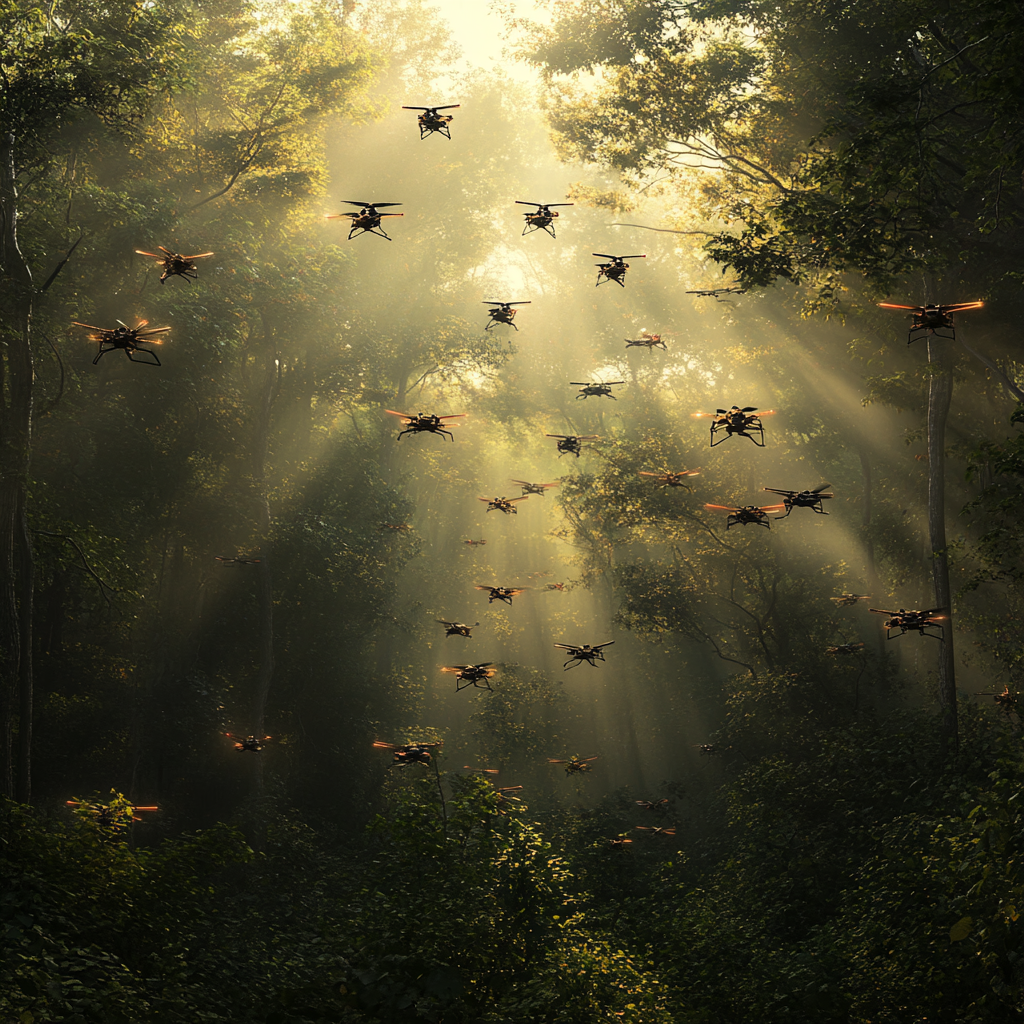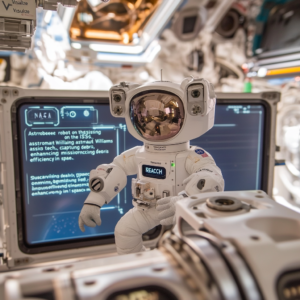
Biomimicry Guides Hungarian Scientists in Crafting Drone Swarms
Drones buzzing around, talking to each other as if they're plotting world domination! Well, not quite. But if you've ever imagined a swarm of tiny, autonomous robots dancing gracefully in the sky, like a flock of birds or a herd of wild horses, then you’re in for a treat. Mind you, this isn't some wild sci-fi movie; it's happening in the real world, thanks to the innovative wizards at Eötvös Loránd University in Budapest.
So, what’s the scoop? These brilliant minds have spent over a decade crafting a fleet of 100 autonomous drones, seemingly channeling Mother Nature herself. Imagine the iconic migration of birds, the coordinated dance of fish in the ocean, or the majestic gallop of horses across the Great Hungarian Plain. By observing these mesmerizing natural behaviors, researchers have created drones that don't just follow tasks like obedient robots but actually talk to each other in the skies. Yes, you heard that right—no more strings attached to a control tower!
Boldizsár Balázs and Gábor Vásárhelyi, the masterminds behind this drone ballet, took lessons from nature, learning how pigeons and wild horses navigate their environments. The key to their success lies in an algorithm—an intricate recipe that mimics the communication methods animals use in their formations. The outcome? Drones that can sidestep obstacles, modify their flight paths, and complete missions all on their own. This isn't just a leap forward; it's a full-blown quantum jump into the future!
Let’s delve a little deeper into the magic of decentralization. In a world where taking the reins is the norm, these drones break free from the central command. Picture this: you give them a task—say, mapping a large area or gathering weather data—then you can literally shut down ground control. Forget about babysitting these aerial assistants; they manage their own ballet in the sky. "After we tell the drones what to do, we can just throw away the ground control station; they’ll be fine on their own," mused Gábor. It’s the techie version of letting your kids ride their bikes in the park without training wheels. That’s some serious trust!
Now, what does this marvel mean for us common folks? The applications could span far and wide. Just take a moment to envision a swarm of 5,000 drones buzzing through the skies. We could be looking at autonomous drones collecting pivotal weather data, or dashing through fields like tiny farming assistants, ensuring every inch of crops gets just the right attention they need. Companies like Amazon and FedEx could redefine how packages get delivered—sorry, mailmen, your jobs might get zapped into an algorithm. Oh, and let’s not forget the role of these mechanical marvels in land surveying, where their knack for precision could save time and effort in mapping.
However, with great power comes great responsibility. What’s that old saying? "With power comes accountability"? Think of it this way: while these drones could revolutionize industries, they also spark ethical debates, especially in the realm of military applications. Researchers like Anna Konert and Tomasz Balcerzak raise eyebrows—what happens if these autonomous marvels fall into the wrong hands? Military drones detached from human operators could mean a slippery slope toward conflict, increasing the likelihood of war and shifting the moral compass of engagement. It’s an unsettling thought, isn’t it?
As we ponder the implications of this technology, the Hungarian researchers remain a beacon of hope. They envision not just a future where drones facilitate everyday tasks but also a reality where airspace management gets transformed. Drones could zigzag around the sky, communicating and making real-time decisions altogether, effectively decentralizing air traffic control. This could lead to a safer and more efficient use of the golden blue above us.
The development of autonomous drone swarms—hats off to these innovators, right? They’ve woven together insights from nature and groundbreaking technology into a vibrant tapestry of possibility. Indeed, as we stand on the threshold of such advancements, it’s crucial to balance innovation with ethical considerations.
So, what's next? Are we ready for our own skies to be filled with these buzzing companions? With each passing drone flight, there arises not just the excitement of what these machines can accomplish but also the duty to wield such innovations with care and wisdom. They say life imitates art, but in this case, it feels like nature imitates technology. Who knew that the flight of the common pigeon could lead to the dawn of a new aerial age?
Want to stay up to date with the latest news on neural networks and automation? Subscribe to our Telegram channel: @channel_neirotoken.

